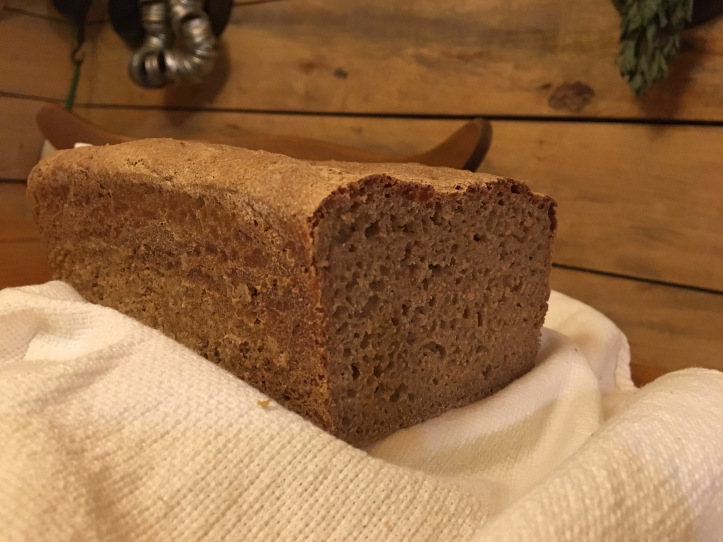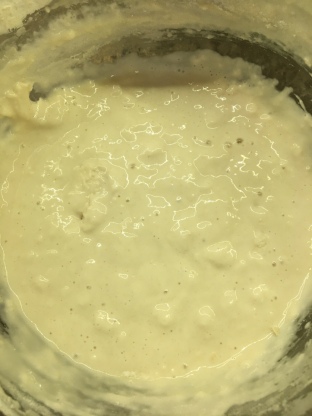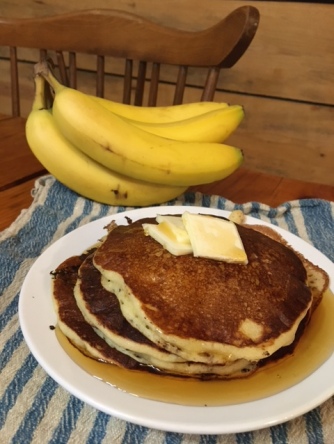Sourdough 101: What You Need to Know

Maybe you hopped on the sourdough craze during the stay-home days of 2020. I know a whole lot of girls who did. It just so happens I already jumped on that bandwagon about a year before. Yet, I was really grateful to be seeing and learning more from other ladies who were starting out on their sourdough journeys.

Sourdough: A Compelling Kitchen Experiment
I dived into the science of sourdough a little more during those spring and summer months. I purchased Around the Family Table Cookbook by Glenda Groff and read up on her sourdough info. She is an expert! I tried-and I failed- several new bread recipes. Of course, the bread was still edible, but I had not found the sweet spot of getting my loaves to rise and stay that way.
If you’ve tried sourdough baking, maybe you can relate.
(FYI, I have included several affiliate links throughout this post. I will receive a small commission if you click, at no extra cost to you! Thanks!)
So, I was sticking with easier recipes that weren’t so dependent on a fluffy rise. I fell in love with pancakes, naan bread, and I tried a few breakfast options.
Here lately, I’ve been loving sourdough pizza. (I found this recipe from Lisa at Farmhouse on Boone. She has incredible sourdough creations!)
Sourdough THM Talk:
In dealing with Trim Healthy Mama sourdough, it can sometimes be tricky to keep it in a solid E mode, without adding an egg and oil. (Like in my Sourdough Banana Pancakes—which is a Crossover.) I’m fine with making some meals Crossovers, so it wasn’t a huge deal to me. But if you are looking to keep the weight loss mode going, it pays to be a little more conscious of the carbohydrate pureness of the sourdough bread. I’m still working on understanding this myself! It can be tricky. But as long as you treat it as an E (healthy carb) and don’t add S ingredients, you will be fine in E mode.
Making whole wheat or even regular All Purpose flour on THM plan friendly, it must be fermented properly. I’m going to point you in the direction of Glenda Groff’s blog if you want to dive into that science of souring and fermentation for on plan treats. Like I said, I’m still getting a handle on it myself as far as THM E friendly goes.
End THM talk**
In this post from June 2019, I take you through the steps of making an einkorn sourdough starter and how I made bread from it. This bread was very satisfactory for my personal bread eating palette. I also loved the fact that I was successfully handling einkorn flour. Check it out here. (If you are interested in purchasing einkorn flour, I have attached my Amazon affiliate link for your convenience here.)
For this post, I wanted to go into a little more detail of the lingo and phrases sourdough bakers like to throw around. Let’s start at the beginning.
So You’ve Came Across A Sourdough Starter…Now What?
Say you’ve been given a wee cup of sourdough starter from a friend who insists you must do sourdough. You’re thinking, “Ok, great, I’m going to kill this thing. What next?” I’m hoping to answer those questions here.
I can speak with authority on this because I have 1) had successful sourdough creations 2) miserably failed sourdough creations 3) even killed my starter and had to beg some from my Mama. So I know what I’m doing by now. Time, trial and error has made me a sourdough junkie. So if you are feeling overwhelmed at first, know that is normal.
The first step in taking care of the sourdough starter is to place it in a clean, dry home. I started off using a wide mouth mason jar, so it was easy to stir, and also easy to measure on the sides. Some will recommend that you keep starter in a glass measuring cup so you can easily see the measurements. I have done both.
A Few Things I Like to Remember
Some rules: never use metal instruments when handling sourdough, never use chlorinated tap water when feeding sourdough, and never leave it out in a dry environment for long periods of time or it will turn into a brick. (Ask how I know.) It’s simple: if you don’t feed your starter, it will die, eventually.
First, you will feed the sourdough. This simply means giving it flour and water. I use King Arthur All Purpose.
What Does it Mean to Feed Your Starter?
In your jar, say you have 2 tablespoons of starter. You will feed it two tablespoons of flour and alllmooost two tablespoons of water. Mix it well with a wooden or plastic spoon. Place a towel or plastic lid on the jar. Let it sit. That’s it.
A successful first feeding. Now, at this point, if you want to get started making sourdough soon, you can actually wait 4-6 hours and feed it again. You will now have doubled the first amount of two tablespoons, which is ¼ cup.
So the next feeding will add ¼ c flour, and almost ¼ c. water. It has doubled again.
You see, you will give your starter a 1:1 ratio of flour, and an almost 1:1 ratio of water. This is my method. In other terms, if I have 1/2 cup of starter, I’ll add 1/2 cup of flour, and use the same measuring cup and fill almost full (a little over 3/4 full) with filtered water.
Some will use 1:1 with flour, then 1:1 with water. Some will use half the amount of water. The above ratios is just how I do it. I know of some people who will measure out the starter exactly to add the exact amount of flour and water needed in grams. I can’t go that far. In my experience, it will be ok just doing what I’ve been doing.

Unfed, straight from the fridge 
Just fed, and mixed. Let sit. 
12 hours later, bubbly and doubled!
Discarding the Starter
Ok, so we’ve covered what feeding means. Now, you will also have a discard.
Once you’re sourdough is built up to ½ cup or a whole cup of starter, you will need to discard BEFORE each feeding. This means what it sounds like. You will pour some off. I know if sounds wasteful. But if you didn’t discard, you would have a vat full of sourdough starter in a few days. So discard you must. (Unless you plan on baking insane amounts, which could be possible I suppose.)
But wait, don’t just pour it down the sink! –I have done that though.– The best thing to do for discard is to store it in a jar in the fridge. That way, when you have a recipe that calls for unfed starter, pull out the discard jar. You can’t leave it in the fridge indefinitely though. The fridge only slows fermentation (or the sourdough eating it’s food) it doesn’t stop it completely. Leave it too long, and it will smell like fingernail polish remover (meaning I’m starved)…and you’ll have to throw it out.
Another way to discard is to plan your baking around it. I have just poured my discard off to make pancakes or skillet bread or pizza. Then I will feed my starter the correct amounts, and place the whole thing in the fridge until next time I need to bake. No need to even store my discard, because we use it up so quickly!
How much should you discard? Half.
That means if you have a cup of starter, pour off ½ cup.
Then go about your feeding business.
You Should Now Have a Healthy Starter
We’ve covered feeding and discarding. This will be your process for keeping your sourdough alive.
You have discarded, fed, and left it out on the counter to do its thing. How do you know when it’s ready to use? Once it is fed, wait at least 6-8 hours before looking at it again. If you can help yourself.
It will almost double in size, have little bubbles, and smell delightfully sour. This is a successful starter. It’s happy and ready to use.

(I know of folks who will do a float test in a cup of water to see if the starter is ready to bake. I never do this.)
From here, you will probably be following a sourdough recipe of some sort. Just a note…the starter will probably deflate when you go to measure it out for your recipe. This is just all the bubbles popping. When you are making a recipe, be sure you are paying attention and leaving starter in your jar for more feeding! Don’t scrape it all clean or you will be out of starter!
After I make a recipe, I will again feed the starter however much flour I need to keep the 1:1 ratio and the almost 1:1 ratio of water.
If I’m done baking for a few days, in the fridge it goes.
What If I Don’t Need To Bake Very Often?
That brings me to the other trick of the sourdough trade. You can absolutely keep it out on your counter every single day. You will then definitely have to feed it every day (if it’s super hot in your home, you may even need to feed it twice a day!)
This is too much upkeep for me. So what I do is store it in the fridge. If you meal plan, you should know exactly when you need to set your jar of starter out so it will be properly fed and ready to go for your next baking session.
This is pretty easy and straightforward.
If I want to make pancakes in the morning, I’ll get it out of the fridge the evening before, and feed it. It’ll be ready in the morning.
I believe I have covered the basics of sourdough starter maintenance. If something here doesn’t seem right to you, or you are confused, let me know!

Looking for more sourdough recipes? Start with my Sourdough Banana Pancakes!




Einkorn Sourdough Bread (THM-E) – J&R Farms
[…] this post on Sourdough 101 for more info on getting started with your own sourdough […]
Sourdough Banana Pancakes – J&R Farms
[…] Sourdough 101 […]
Apple Cinnamon Sourdough Pancakes – J&R Farms
[…] will need to use your unfed sourdough starter. (Confused by the sourdough talk? Check out my Sourdough 101 […]
Sourdough Banana Pancakes – J&R Farms
[…] This banana pancake recipe uses up sourdough starter that has been fed at least the night before. It’ll be good and bubbly. But I have made these with only discard that has been left out of the fridge overnight, unfed, and they turned out fine. If you’re not sure what I’m saying with all the sourdough lingo, check out this post: Sourdough 101 […]